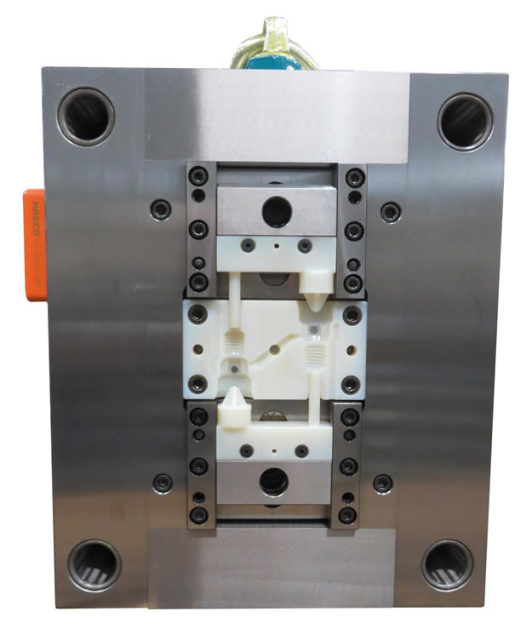
Stratasys Ltd. and mold maker HASCO have announced a new approach to the production of low volume injection molded prototypes that could be a quicker and more cost-effective hybrid system.
The integration of the K3500 quick-change mold system and Stratasys 3D printing enables the rapid change out of inserts for different objects so molders can create low volumes of injection molded parts for multiple products at a lower cost.
Using Stratasys’s Objet500 Connex Multi-material 3D Production System and their Digital ABS material, HASCO was able to print the inserts in only a few hours, which could enable producers to make design modifications faster than traditional tooling methods.
Dirk Paulmann, executive vice president of sales and business development at HASCO, said:
With time-to-market cycles shorter than ever and production quantities dropping, our customers are now looking for solutions that enable them to deliver prototypes quickly and cost-effectively. Compared with conventional metal or aluminum inserts, our new approach offers molders the flexibility to quickly produce and switch inserts, making them much more productive and profitable. Combining our longstanding heritage in mold making with Stratasys’s pioneering expertise in 3D printing injection molds, this best of both worlds technique is the future of prototype and low volume production.
Needing a sealing plug for its A8001 clamping fixture, HASCO determined that the walls of the ABS plastic sealing screw must be 12 mm thick to seal the many threaded holes on the component. They also determined that this requirement could not be made with conventional injection molding processes. Using Stratasys’s PolyJet technology, a design team from HASCO was able to reduce the wall thickness on the screw and then quickly produce a prototype for testing before the screw was mass produced.
Pullman explained:
Using our Objet500 Connex 3D Production System, we produced the parts of the cavity that shape the polymer – such as the inserts and slides – in just six hours compared to the 24 hours it previously took. We then worked with prototyping specialists Canto Ing. GmbH, Lüdenscheid, to finish the 3D printed inserts and test the sample mold. We were delighted with the result, the first sealing screws were produced ready for mounting on our clamping unit in a record time of only four days.
Read more at ENGINEERING.com

